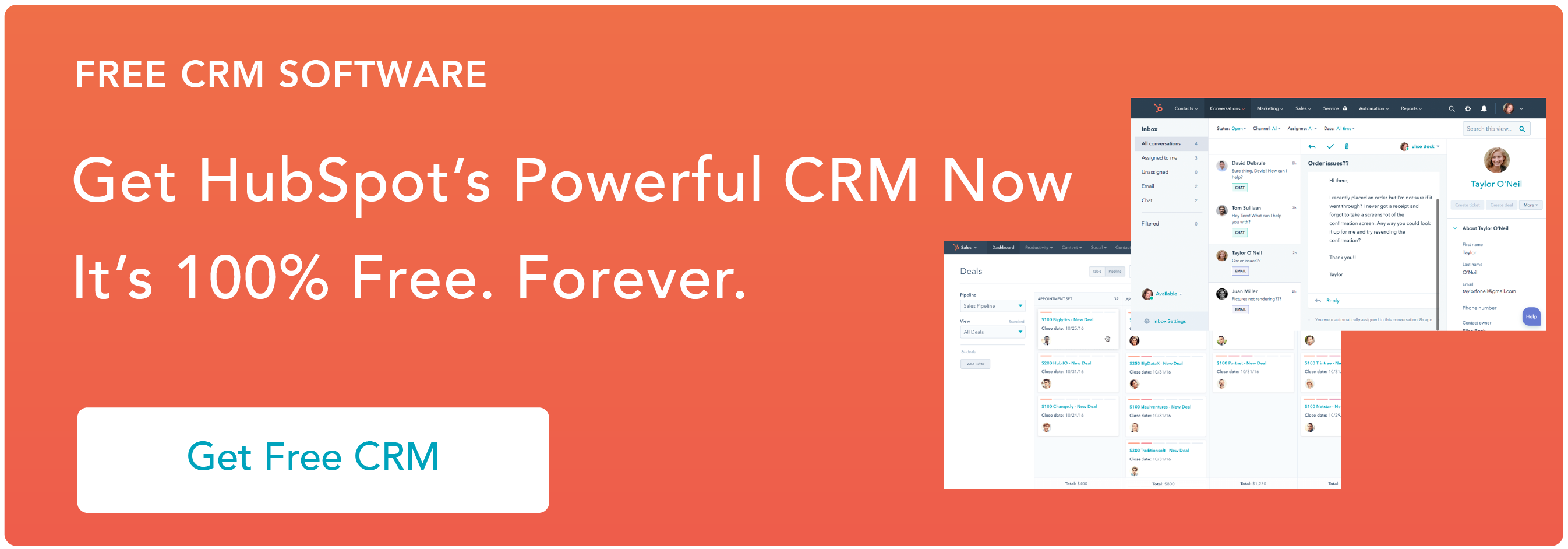When assessing your team’s performance, sales activities offer crucial metrics. That includes the number of sales calls, VP-level meetings, new qualified opportunities, and so on. With proper sales activity management, you can influence sales objectives and business results.

When building your strategy, you’ll need to set sales activities goals and track how your team measures up. In this post, you’ll learn tips for managing your team’s sales activity and about the software that can help along the way.
Table of Contents
- What is sales activity management?
- Reasons to Be Tracking Sales Activity
- 3 Steps to Implementing Sales Activity Management
- Top 10 Sales Tracking Software
What is sales activity management?
Sales activity management involves identifying, tracking, and optimizing sales teams' key activities to maximize revenue. Sales reps perform daily activities like making phone calls, having meetings, and bringing on qualified leads. Sales activity management aims to manage the most productive activities of sales reps to create repeatable processes and goals that will drive revenue.
Reasons to Track Sales Activity
Increased Revenue
Sales activity management can help your team increase revenue. By identifying the key activities your reps perform daily, tracking them, and providing the tools to optimize them, you can create a framework for them to close more deals.
Streamlined Processes
Focusing on sales activity management means identifying actions that result in deals and cutting out the rest. If you can pinpoint activities that reliably lead to wins, you can streamline your team’s workflow by providing clear metrics to achieve and a process for doing so.
For example, if you have an exceptionally high-performing rep, you can analyze her daily activities, understand the secret to her success, and disseminate that knowledge to the team.
Boost Team Morale
If your reps know exactly what activities they need to focus on for success, it’ll make the day-to-day more manageable — and they will be delighted as the deals start flowing in.
Managing sales activity empowers reps by allowing them to focus on the things they can directly control. Sales activity management can also result in a healthy sense of competition amongst the team, especially if you can gamify the key activities that lead to sales.
Increased Visibility and Reporting
Sales activity management gives magnified visibility into your team’s performance. For example, let’s say you missed last quarter’s revenue goal. If you have pinpointed key sales activities, you can see where you are falling short and quickly right the ship.
Additionally, managing sales activity means you’ll have cleaner reporting to show higher-ups precisely how your efforts translate to revenue growth.
In other words, getting the business results you want hinges on managing the activities that precede them. Get started with this three-step process.
3 Steps to Implementing Sales Activity Management
1. Determine key selling activities.
Define the sales activities that lead to won deals. Start by laying out the structure of your sales organization. Note each selling role and where it fits into the sales process.
Do you have sales development reps who generate leads and then distribute those leads to account executives? Or are your field sales reps handling deals from start to finish within their assigned territories?
Once you've mapped out the structure of your sales team, define the critical activities for each role. For a sales development rep, those could be meetings scheduled and sales accepted opportunities. On the other hand, for a field sales rep, those activities might be opportunities discovered, VP-level conversations, face-to-face meetings, and proposals sent.
Next, interview your sales managers and reps for their perspectives on key activities. Ask top performers what they do daily that makes them successful. You should also speak to other reps and managers about what they see top performers doing every day.
Use this information to develop the activities that comprise your sales process. Then share the results with your team and get their feedback. Not only will involving them increase buy-in across the team, but they may point out crucial points you’ve overlooked.
Analyze best practices as well. Two salespeople might contact the same number of prospects. However, say one of those reps researches her prospects, writes personalized emails, incorporates trigger events, and crafts individual value propositions. She'll be far more successful than her peer.
When you set key activities with your sales team, you should share selling techniques and strategies at the same time.
2. Reverse-engineer your sales process.
Next, determine the amount of each activity you need to reach your goal. Start with your highest-level goal: Revenue.
Let’s say your annual target is $70 million in bookings, and your average deal size is $35,000.
$70 million (revenue needed) ÷ $35,000 (average deal size) = 2,000 deals
If you have a 25% proposal-to-deal conversion rate, your salespeople will need to send out 8,000 proposals. That, in turn, requires 2,000 meetings. For those meetings to occur, your reps must have 128,000 conversations.
Now break down the activity metrics by timeframe.
- 2,000 deals ÷ year = 167 deals per month
- 8,000 proposals ÷ year = 667 proposals per month
- 32,000 meetings ÷ year = 640 meetings per week
- 64,000 calls ÷ year = 256 calls per day
Assign a corresponding number of activities to each salesperson. Let’s assume you have 100 reps on your team.
- 167 deals per month ÷ 100 reps = 2 deals per month
- 667 proposals per month ÷ 100 reps = 7 proposals per month
- 640 meetings per week ÷ 100 reps = 7 meetings per week
- 256 conversations per day ÷ 100 reps = 3 calls per day
Now you can track activity by individual sales rep. Give each one a personal scorecard so they can keep track of their own metrics and make informed decisions about how they spend their time.
3. Monitor metrics and course-correct performance.
Proactively manage these activity metrics by monitoring them daily and reviewing them in your weekly one-on-ones and team meetings. It’s helpful to use a sales activity management system, which automates tracking, calculates pacing, and alerts sales leaders when metrics fall behind.
Use the data to determine where deals get stuck in your sales process and the areas where your reps need more coaching.
Do you notice reps sending the right number of proposals but not winning enough deals? They might need help writing proposals. Is your team making the right number of calls but not getting enough meetings? Train them to accurately identify your ideal customers.
If your team falls behind on their activity goals, try rallying them around specific metrics. Use personalized scorecards and stack rankings to inspire focus and collaboration. With the activity data you gather, you can uncover best practices and recognize top performers.
Sales activities are the only metrics we can control, so we must manage our teams around them. This approach is called activity-based selling, and it’s being adopted by modern sales leaders everywhere. Will you be next?
Top 10 Sales Tracking Software
When it comes to managing sales activity, you’re going to need some help. So here are our favorite software picks for sales activity management.
1. HubSpot
-jpg.jpeg)
Get complete visibility into your pipeline and track every aspect of your sales cycle with HubSpot sales tracking software.
HubSpot CRM offers an industry-leading product with customer support to match. Some favorite features include advanced automation, document tracking, and custom reports to track sales rep activity.
What we like: HubSpot CRM offers a comprehensive suite of tools, making it a great option for businesses looking for an all-in-one sales solution.
Key Features
- Forecasts revenue and likelihood-to-close for deals in your pipeline
- Automated workflows and personalized outreach
- Custom reporting and analytics
- Mobile app
2. Pipedrive
-jpg.jpeg)
Pipedrive is a powerful CRM that can help you keep track of sales activities, customize your pipeline, and automate growth. They offer a user-friendly interface, affordable plans, and API access for full customization.
What we like: Pipedrive’s Sales Dashboard gives insight into your reps’ performance, allowing you to identify top performers and analyze critical sales activities.
Key Features
- Email and Communication tracking
- Mobile App
- Custom reporting
- Goals feature for tracking activities
3. Salesforce
-jpg.jpeg)
If you work in sales, you’ve likely worked with Salesforce. It’s a long-standing CRM that handles large workforces with complex needs. In addition, Salesforce offers nearly unlimited customization options so you can track activities, manage your pipeline, and create custom reports.
The drawback with Salesforce is its steep learning curve. Salesforce offers so many customization options that it can be challenging to learn and maintain.
Best for: Large businesses that need advanced customization and a deep feature set.
Key Features
- Advanced customization options
- Large number of available integrations
- Advanced reporting capabilities
- AI-based forecasting
4. Monday.com
-jpg.jpeg)
Monday.com is an all-in-one CRM that offers sales activity tracking for small businesses.
Monday.com is easily customizable without needing to loop in developers to handle tricky APIs. Their activity management features allow you to log any contact-related activity, like calls, meetings, and notes, to stay on top of rep performance.
Best for: Small businesses who want an easy-to-use yet customizable solution focusing on efficiency.
Key Features
- Activity logging
- Email sync with Gmail and Outlook
- Custom Dashboards
- Team goals for managing quota and other activity
5. Nutshell
-jpg.jpeg)
Nutshell is CRM with a focus on simplicity. If you appreciate a simple, attractive interface and a practical feature set, then Nutshell might be for you.
Nutshell comes loaded with valuable sales reporting features, like activity reports, forecasting, and loss reports to pinpoint the areas that need attention.
What we like: Nutshell has an intuitive activity management interface and affordable pricing.
Key Features
- Useful built-in reports
- Email sequences
- Sales automation for streamlining sales activity
- Activity Tracking
6. Copper
-jpg.jpeg)
Copper is a CRM solution designed specifically for Google Workspace users. Copper is fully customizable yet easy to use, and it's a no-brainer if your team is entrenched in the Google ecosystem.
Copper automatically captures lead data and sales activities, synthesizing it into an easily digestible dashboard to keep track of performance. Their leaderboard feature can spark friendly competition among the team and illuminate top performers.
Best for: Google Workspace users who want a CRM that tightly integrates with Gmail, Calendar, Drive, and more.
Key Features
- Native integration with Google Workspace
- Sales activity-based leaderboard
- Pipeline management and reporting
- Sales workflow automation
7. Close
-jpg.jpeg)
Close is a CRM built for high-growth companies like startups and SaaS outfits. Close automatically logs sales activities made by reps and turns them into easy-to-read reports that help you hone in on actions that are moving the needle.
Their activity overview report gives you actionable insights on rep performance based on key activities like the number of calls, emails sent, and leads created.
What we like: Close includes premium features like global calling and email automation as standard, while other options require you to pay for these as add-ons.
Key Features
- Activity overview reports
- Sales leaderboard
- Automation sequences with templates
- Free, customized onboarding process
8. Ambition
-jpg.jpeg)
Ambition is sales management software that allows you to track your reps’ activity, create leaderboards, implement coaching, and gamify the process to inspire your team. Ambition will even issue scorecards to reps and give you a picture of performance based on your pinpointed activities.
While the other options on this list are CRMs with activity management features, Ambition is solely poised toward sales management.
Best for: Teams who already have a CRM solution but are looking to optimize activity tracking and performance further.
Key Features
- Coaching toolset
- Automatic capture of rep activity
- Leaderboards, competitions, and performance recognition
- Real-time sales dashboard
9. Freshworks
-jpg.jpeg)
Freshsales from Freshworks is a modern CRM that can manage your contacts and deals, execute automated workflows, and keep track of sales activity to keep your team on track.
Freshsales can track normal sales activities like calls, emails, meetings, and custom activities — and report on all of it. Freshworks can even send and track SMS messages.
What we like: Freddy, Freshworks’ AI-powered assistant, learns from your CRM data to provide intelligent recommendations and reports.
Key Features
- Sales activity tracking and reports
- AI-powered assistant
- Clean visual reports and dashboards
- Email integration
10. Agile CRM
-jpg.jpeg)
Agile CRM is an all-in-one, affordable solution for small to mid-sized businesses. Agile CRM is meant to be a one-stop shop for sales, marketing, service, and social media. However, that doesn’t mean their sales activity management features are overlooked.
Agile CRM offers powerful reporting features to manage rep activity and gamification options to encourage reps to reach activity-related goals. If your sales team engages with customers through social, their social integration will ensure those activities don’t fall through the cracks.
What we like: Agile CRM is an affordable and scalable option. Their free product is excellent for freelancers and startups, and you can scale up to their paid products as your business grows.
Key Features
- Activity tracking
- Gamification options
- Social media integration
- Customizable reports
Managing Sales Activities
Sales activity management can help you identify best practices and amplify what works across your team. Start by using software to keep track of crucial metrics. From there, you can turn what’s working into scalable processes.



![The Ultimate Sales Cheat Sheet Template to Help Boost Rep Success [New Data + Templates]](https://knowledge.hubspot.com/hubfs/ft-cheat.webp)

![Why Sales Activity Tracking Matters [+ the 10 Best Sales Goal Tracker Tools & Templates]](https://knowledge.hubspot.com/hubfs/image-1-1.webp)




